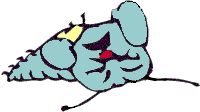
In VFP 5 and VFP 6, clicking on the current page of a page frame in an area containing no control fires just the page's Click, while clicking on the tab of a page sometimes fires first the page frame's Click, then the form's Click, and finally the page's Click. In VFP 3, the sequence is the same, except that, in the second case, the form's Click doesn't fire. We can't see any reason why the form's Click fires. This bug appears to be fixed in VFP 7.
